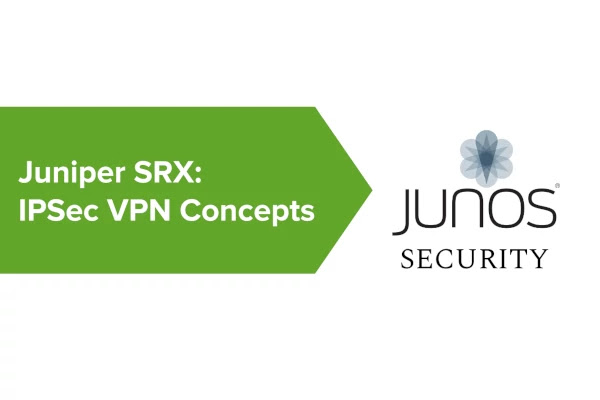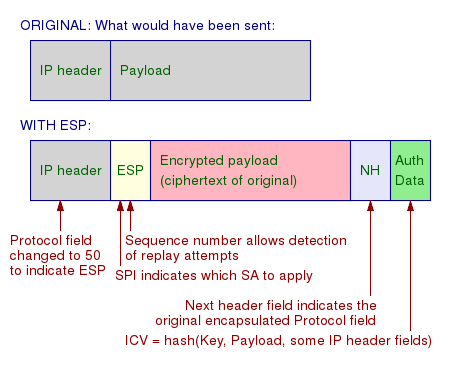Featured
Table of Contents
Ssl Vpn And Ipsec Vpn: How They Work
IPsec confirms and secures information packets sent over both IPv4- and IPv6-based networks. IPsec procedure headers are found in the IP header of a packet and specify how the information in a packet is managed, including its routing and shipment throughout a network. IPsec includes several elements to the IP header, consisting of security info and one or more cryptographic algorithms.

ISAKMP is defined as part of the IKE procedure and RFC 7296. It is a structure for essential facility, authentication and negotiation of an SA for a safe exchange of packages at the IP layer. In other words, ISAKMP specifies the security criteria for how two systems, or hosts, interact with each other.
They are as follows: The IPsec procedure starts when a host system acknowledges that a packet needs protection and must be sent utilizing IPsec policies. Such packages are considered "fascinating traffic" for IPsec functions, and they activate the security policies. For outgoing packages, this means the appropriate encryption and authentication are used.
Ipsec: A Comprehensive Guide - Techgenix
In the second step, the hosts utilize IPsec to negotiate the set of policies they will use for a secured circuit. They likewise validate themselves to each other and established a secure channel in between them that is utilized to work out the method the IPsec circuit will secure or confirm data sent out across it.

A VPN essentially is a private network carried out over a public network. VPNs are frequently utilized in services to allow workers to access their business network remotely.
Normally used between guaranteed network gateways, IPsec tunnel mode enables hosts behind one of the entrances to interact safely with hosts behind the other entrance. Any users of systems in an enterprise branch workplace can securely link with any systems in the main workplace if the branch workplace and main office have safe and secure gateways to act as IPsec proxies for hosts within the respective offices.
Ipsec (Internet Protocol Security)
IPsec transportation mode is utilized in cases where one host requires to connect with another host. The two hosts negotiate the IPsec circuit straight with each other, and the circuit is generally taken apart after the session is total. A Secure Socket Layer (SSL) VPN is another technique to securing a public network connection.
With an IPsec VPN, IP packages are secured as they travel to and from the IPsec entrance at the edge of a personal network and remote hosts and networks. An SSL VPN safeguards traffic as it moves between remote users and an SSL gateway. IPsec VPNs support all IP-based applications, while SSL VPNs just support browser-based applications, though they can support other applications with custom-made development.
See what is finest for your company and where one type works best over the other.
Guide To Ipsec Vpns - Nist Technical Series Publications
Lastly, each IPsec endpoint verifies the identity of the other endpoint it desires to communicate with, making sure that network traffic and information are only sent to the intended and allowed endpoint. In spite of its fantastic energy, IPsec has a few issues worth pointing out. Direct end-to-end communication (i. e., transmission technique) is not constantly available.
The adoption of numerous local security regulations in massive distributed systems or inter-domain settings may posture extreme concerns for end-to-end communication. In this example, presume that FW1 requires to inspect traffic content to spot intrusions which a policy is set at FW1 to deny all encrypted traffic so as to implement its content inspection requirements.
Users who use VPNs to remotely access a personal business network are placed on the network itself, offering them the exact same rights and operational capabilities as a user who is linking from within that network. An IPsec-based VPN might be produced in a range of ways, depending on the needs of the user.
What Is Ipsec And How Does It Work?
Since these parts might stem from various suppliers, interoperability is a must. IPsec VPNs allow smooth access to business network resources, and users do not always need to use web gain access to (gain access to can be non-web); it is therefore a service for applications that need to automate interaction in both ways.
Its framework can support today's cryptographic algorithms as well as more effective algorithms as they end up being available in the future. IPsec is a mandatory component of Web Protocol Variation 6 (IPv6), which business are actively releasing within their networks, and is strongly recommended for Internet Protocol Variation 4 (IPv4) implementations.
It offers a transparent end-to-end safe and secure channel for upper-layer procedures, and implementations do not require adjustments to those protocols or to applications. While having some downsides associated with its complexity, it is a fully grown procedure suite that supports a variety of encryption and hashing algorithms and is highly scalable and interoperable.
Ipsec—what Is It And How Does It Work?
Like VPNs, there are many ways a Zero Trust design can be executed, but services like Twingate make the process substantially easier than needing to wrangle an IPsec VPN. Contact Twingate today to get more information.

IPsec isn't the most typical internet security procedure you'll use today, but it still has an important role to play in protecting web interactions. If you're using IPsec today, it's most likely in the context of a virtual personal network, or VPN. As its name indicates, a VPN creates a network connection between two devices over the general public internet that's as safe (or almost as safe and secure) as a connection within a private internal network: most likely a VPN's most popular use case is to enable remote employees to gain access to secured files behind a business firewall as if they were working in the office.
For the majority of this post, when we say VPN, we indicate an IPsec VPN, and over the next several sections, we'll discuss how they work. A note on: If you're aiming to establish your firewall program to enable an IPsec VPN connection, make certain to open UDP port 500 and IP ports 50 and 51.
Ipsec Made Simple — What Is Ipsec?

As soon as this has all been set, the transport layer hands off the information to the network layer, which is mostly managed by code working on the routers and other components that comprise a network. These routers decide on the path private network packets take to their destination, but the transport layer code at either end of the interaction chain does not require to understand those details.
On its own, IP doesn't have any built-in security, which, as we kept in mind, is why IPsec was developed. Today, TLS is developed into practically all internet browsers and other internet-connected applications, and is more than sufficient defense for daily internet use.
That's why an IPsec VPN can include another layer of security: it includes securing the packages themselves. An IPsec VPN connection starts with establishment of a Security Association (SA) in between 2 communicating computer systems, or hosts. In basic, this includes the exchange of cryptographic keys that will permit the celebrations to secure and decrypt their communication.
Latest Posts
Get The Best Business Vpn 2023 - Expressvpn
The 5 Best Vpn Services For The Bay Area
Best Vpns For China In 2023 (+ My Strategy To Use Them)